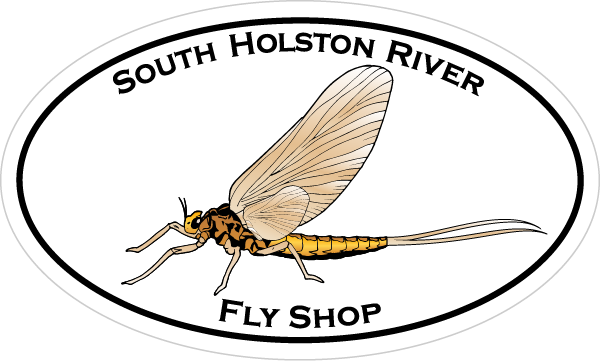South Holston River
The South Holston River flows cold and clear from the bottom of South Holston Reservoir, one of The Tennessee Valley Authorities (TVA) impoundments. Like other tailwater rivers, it maintains an optimum water temperature year round, providing outstanding trout habitat and angling opportunities in all seasons.
The South Holston Tailwater is home to rainbow and brown trout, and although the river is stocked, wild reproduction is strong. The fish in the Holston are deeply colored, healthy, bruising fighters that grow to enormous proportions. Brown trout in the 5 lb range are common and fish in the 20 lb range are taken every year.
Insect life in the Holston is extremely prolific, creating a solid food chain and finicky fish. The midges never seem to stop hatching at the Weir Dam and the fish never seem to stop feeding. The Sulphurs, which hatch daily in the summer months, and sporadically the rest of the year, are such a staple to the trout, that they can be fished as a search pattern and will be taken even when fish are rising. The Blue Winged Olives take the stage in the winter and can be fished as either dries or emergers, especially on those cloudy, rainy days.
The TVA maintains and operates only one generator at the the site, therefore the water is either on, flowing between 1200-2500 cfs, or off, flowing at less than 200 cfs. Water releases trigger hatches, which in turn trigger fish to feed, and few would argue that your best chances of hooking a big fish is when the water is up. However, wading opportunities are few when TVA is generating power, and the river becomes quite dangerous. It is possible to carefully wade areas of the shoreline, but extreme caution should be used. The Map shows approximate travel times for the water released from the dam, and the savvy fisherman will adjust locations based on that schedule. Fishing on the falling water can be extremely rewarding, especially if the sulfur hatch continues as the river drops.
Watauga River
The Watauga River is rich in history both from the Cherokee, whose word Watâ’gi means beautiful waters, as well as with early settlers such as Daniel Boone and John Sevier, who spent much of their lives in the area. The Watauga River rises from the slopes of the famous Grandfather Mountain in North Carolina before crossing into Tennessee where Highway 321 follows its course. After entering The Volunteer State, the Watauga reaches the Impoundment of the 6400-acre Watauga Lake formed by the Watauga Dam, where it is crossed by The Appalachian Trail. After leaving Watauga Lake, the river flows for only a short distance before it is blocked by the Wilbur Dam, the first hydroelectric dam built in the area, and the reason why some refer to the Watauga as The Wilbur Tailwater. The approximately 19 miles of trout habitat on the Watauga can be broken up into three sections, the upper, middle, and lower.
The upper river, from the base of the Wilbur Dam to the edge of Elizabethton, fishes best in the spring and fall. The upper section is home to some very large holdover fish and there is strong evidence to suggest a good amount of natural reproduction is occurring, especially among the river’s brown trout. The middle section flows through Elizabethton where access can be difficult, but the insect life is very prolific. This is due in part to the nutrient boost the river receives from farmland in the upper section. The middle section of the river has great hatches of Caddis, Sulfurs, BWOs, and the ever-present Midges that keep the trout looking up and the fish counts high. The lower section also referred to as the “Trophy Section,” unofficially begins at the Blevins Bend Public Access Area.
From The Smalling Road Bridge downstream to the Persinger Railroad Bridge near the town of Watauga is designated as a “Quality Zone” by the TWRC and has special regulations. The Lower Section fishes well all year and is home to some large, wily fish. Because the water flowing out of Wilbur Dam maintains a consistent temperature of about 52-53°F, the Watauga is indeed a year-round fishery. The winter months produce nice hatches of BWOs and midges, and of course, there are fewer fishermen. Early spring on the Watauga is the time when the large black caddis, (about a size 12) come off, and this is the hatch to catch. These bugs get the big ones looking up, and thrashing strikes at skittering flies is really something to experience.
The Watauga River is a great river to float in either a drift boat, canoe, or personal watercraft. There are some long, slow sections that are very deep and fishable from a belly boat, as well as some shoals and rapids which can be dangerous to novice boatmen. As with any tailwater, the water can and will rise rapidly and without warning. Be aware of your surroundings and if you notice the water rising, get out on the same side you got in.
